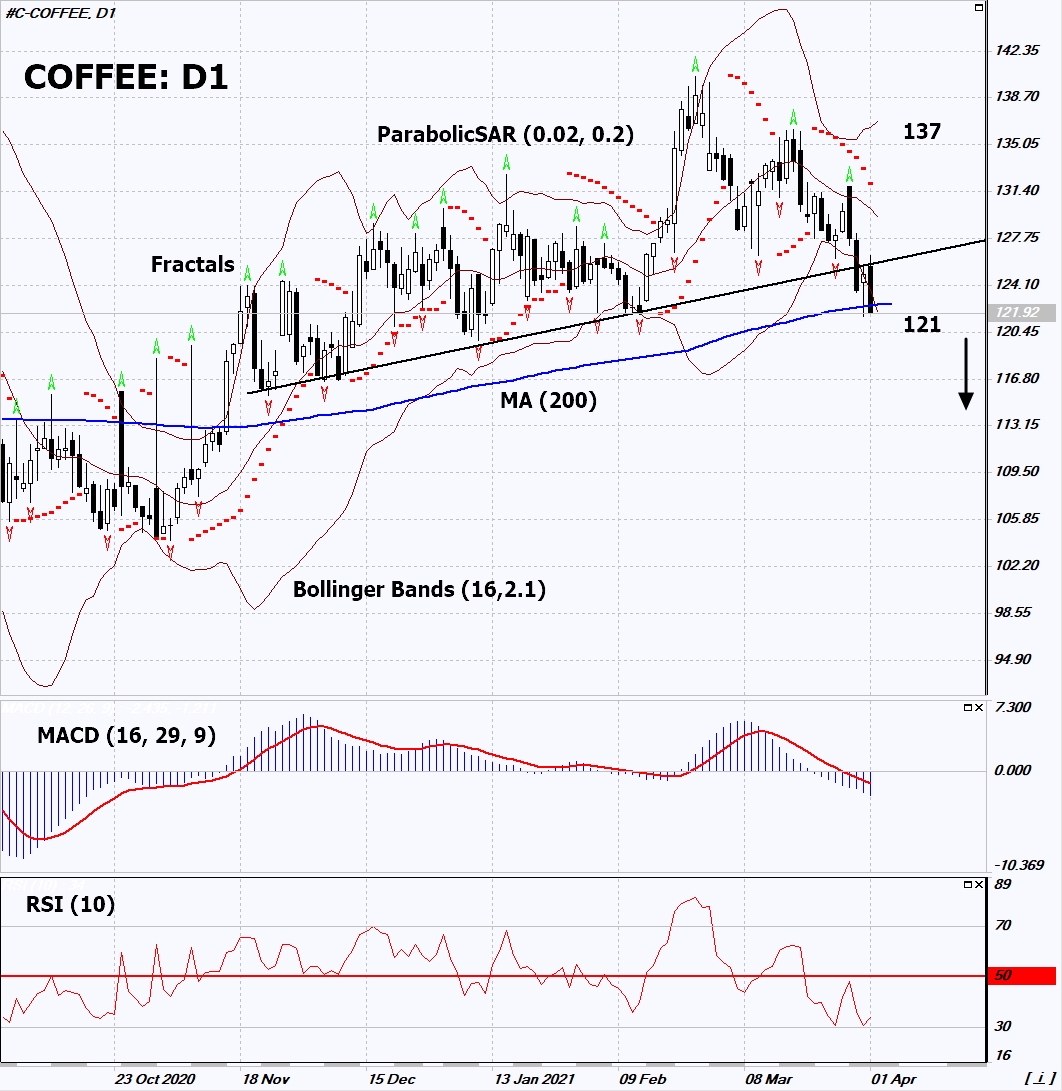Recommendation for COFFEE:Sell
Sell Stop : Below 121
Stop Loss : Above 137
RSI : Neutral
MACD : Sell
MA(200) : Sell
Fractals : Neutral
Parabolic SAR : Sell
Bollinger Bands : Neutral
Chart Analysis
On the daily timeframe, COFFEE: D1 breached down the uptrend support line and the 200-day moving average. A number of technical analysis indicators formed signals for further decline. We do not rule out a bearish movement if COFFEE: D1 falls below the last low: 121. This level can be used as an entry point. We can place a stop loss above the last 2 upper fractals, the upper Bollinger line and the Parabolic signal: 137. After opening a pending order, we can move the stop loss following the Bollinger and Parabolic signals to the next fractal maximum. Thus, we change the potential profit/loss ratio in our favor. After the transaction, the most risk-averse traders can switch to the four-hour chart and set a stop loss, moving it in the direction of the trend. If the price meets the stop loss (137) without activating the order (121), it is recommended to delete the order: there are internal changes in the market that have not been taken into account.
Fundamental Analysis
Lockdowns are coming into force in a number of European countries, which means restrictions on restaurants and cafes. Will the COFFEE prices keep declining? In France, Covid-19 quarantine is extended by a month, and in Sweden until May 3. Austria announced quarantine in 3 regions, including the capital, Vienna. Germany and Italy tightened the rules for visiting public places. Restrictions on restaurants and cafes can reduce coffee consumption. Since the beginning of 2021, the Brazilian real has depreciated by 11% against the US dollar. This may stimulate Brazilian coffee exports. According to CeCafe, exports increased by 10% last year. The Brazilian real exchange rate for 2020 fell by 27% against the US dollar. So far, Brazilian coffee exports for 2021 are difficult to estimate, as the country’s harvest is expected to decline due to drought. The International Coffee Organization predicts that global coffee production in the 2020/2021 agricultural season will rise by 1.9% to 171.9 million bags. At the same time, the global surplus may increase by 27% to a 3-year high of 5.3 million bags.
